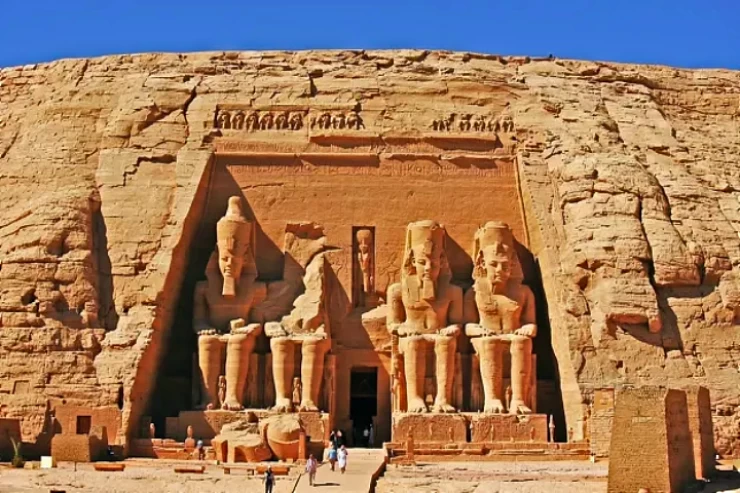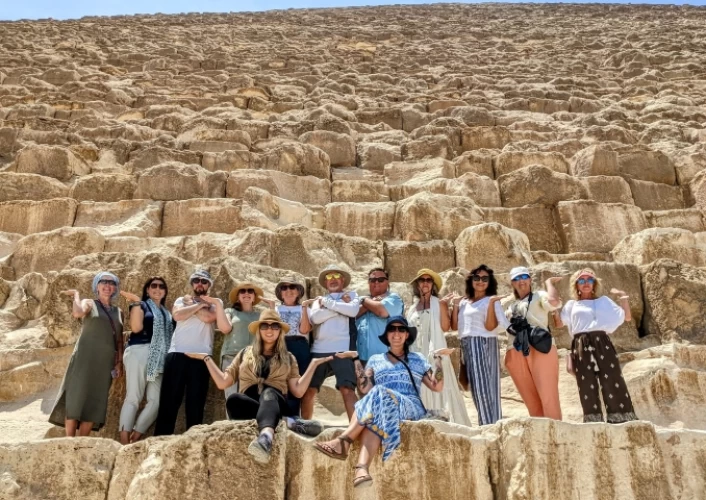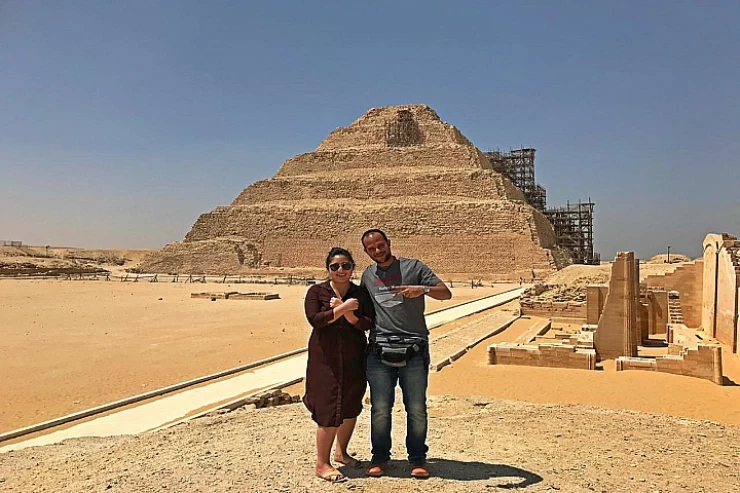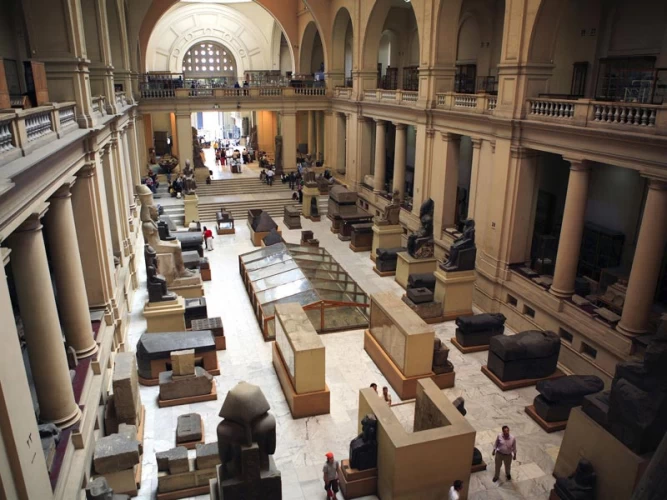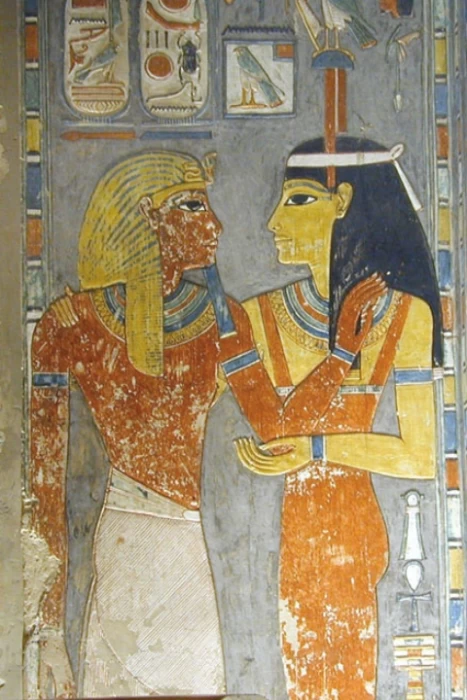
Déesse Amunet
monet, " la Cachée ", est une déesse protectrice et primordiale de l'occulte dans la mythologie égyptienne ; elle personnifie le vent du nord, celui qui donne la vie. Elle est appelée dans l'histoire "la Cachée", ou encore
"la mère qui est le père".
Nom égyptien : Amenet. Nom hellénisé : Amonet
Elle était représentée comme un serpent, ou une femme à tête de serpent, portant la couronne rouge de Basse-Égypte à Thèbes, et sous les traits d'une femme à tête de grenouille à Hermopolis. Elle est également représentée sous la forme d'une vache.
Mythologie d'Amonet
C'est la divinité tutélaire du pharaon qui est " présente " lors de la cérémonie d'accès au trône, parfois accompagnée de Min. Amonet, dans la cosmogonie de Thot, est la partenaire d'Amon, mais elle perd de son importance au profit de Mout, qui sera considérée comme l'épouse du dieu Amon, au fur et à mesure que le culte du dieu Osiris se développe. Plus tard, la déesse Isis adoptera toutes ses qualités. A la Basse Période, Amon et Ammonet feront partie de l'Ogdoade hermopolitaine.
Cette déesse était en quelque sorte l'équivalent féminin du dieu Amon. Elle formait, avec lui, l'un des quatre couples primordiaux de l'Ogdoade d'Hermopolis. En d'autres termes, elle jouait un rôle important dans la création et était considérée comme l'une des "mères des dieux".
Il faut savoir que la théologie d'Hermopolis, qui présentait les quatre couples des Ogdoades (dont Amon et Amonet) comme des divinités primordiales à l'origine de tout, existait bien avant la célèbre triade thébaine du Nouvel Empire (entre les XVIIIe et XXe dynasties), qui comprenait Amon, Amon et Amon Khonsu. Cependant, ce n'est qu'à l'époque tardive (entre la 25e et la 31e dynastie) que la tradition d'Hermopolis retrouve une grande importance et rétablit Amonet à son rang de divinité primordiale.
Le culte de la déesse
Son culte s'est développé au Moyen Empire et s'est consolidé au Nouvel Empire. Elle était vénérée à Hermopolis, également à Karnak, à côté d'Amon et de Mout, et dans le temple de Louxor sous la forme d'Opet ; à Deir el-Hagar comme couple d'Amon. Elle avait des prêtres pour son culte spécifique déjà à la XVIIIe dynastie, les prophètes d'Ammonet.
L'ancienne Égypte a beaucoup de secrets et tant de dieux et de déesses, vous pouvez voyager en Égypte et en savoir plus sur l'ère pharaonique, faire une excursion d'une journée au musée égyptien et un safari autour des pyramides.
Visitez l'Égypte et profitez d'une grande aventure riche en connaissances sur les pharaons et leurs croyances religieuses pendant les circuits de Noël en Égypte avec votre famille et vos amis.
Amunet, "the Hidden One", is a protective and primordial goddess of the occult in Egyptian mythology; she personifies the north wind, the one who brings life. She is called in history "the Hidden One", or
"The mother who is father". Egyptian name: Amenet. Hellenized name: Amonet
She was represented as a serpent, or snake-headed woman, wearing the Red crown of Lower Egypt at Thebes, and in the guise of a frog-headed woman at Hermopolis. Also, as a cow.
She is the tutelary deity of the pharaoh who is "present" in the ceremony of access to the throne, sometimes accompanied by Min. Amonet, in the cosmogony of Thoth, is the partner of Amon, but she lost importance in favor of Mut, who will be considered the wife of the god Amon, as the cult of the god Osiris grew. Later the goddess Isis will adopt all her qualities. In the Low Period, Amon and Ammonet will be part of the Hermopolitan Ogdoad.
This goddess was in a certain way the feminine equivalent of the god Amon. She formed, with him, one of the four primordial couples of the Ogdoad of Hermopolis. In other words, she played an important role in the creation and was considered one of the "mothers of the gods".
It should be known that the theology of Hermopolis, which presented the four pairs of the Ogdoads (including Amon and Amonet) as primordial divinities at the origin of everything, existed long before the famous Theban triad of the New Kingdom (between the XVIII and XX dynasties), which included Amon, Amon, and Amon Khonsu. However, it was only in the late period (between the 25th and 31st dynasties) that the Hermopolis tradition regained great importance and restored Amonet to his rank of primordial divinity.
Her cult rose during the Middle Empire and was consolidated in the New Empire. She was venerated in Hermopolis, also in Karnak, next to Amon and Mut, and in the temple of Luxor under the form of Opet; in Deir el-Hagar as a couple of Amon. She had priests for her specific cult already in the XVIII Dynasty, the prophets of Ammonet
Old Egypt has many secrets and so many gods and goddess, you can travel to Egypt and know more about the pharaonic era, take Day Tour to the Egyptian Museum and Safari tour around the Pyramids
Amun, Mut, or Amunet, is the wife of the god Amun or Amun-Ra, and was known as the cow of heaven, which is the feminine form of the word Amun. Their son was the god Khonsu, the moon god of the ancient Egyptians. The father, son, and wife formed the holy trinity of the city of Thebes. Mut, or Mut, means "mother," and she was the mother of the gods in ancient Egypt. Her pronunciation and name changed over the thousands of years in several cultures and civilizations. She was often depicted as an Egyptian eagle, which is a white vulture.







